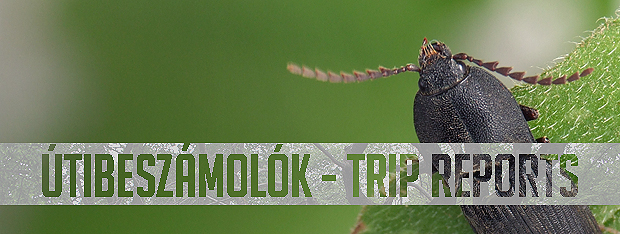
TRIP REPORTS
IV.2011.Gerecse
I found the pictures of some huge oak
trees on the net (dendromania),
in the Gerecse Mountains. We are always keen on visiting areas
wich are new for us. So we jumped into Attila's car with Petra, and
travelled about 100 kilometres west.
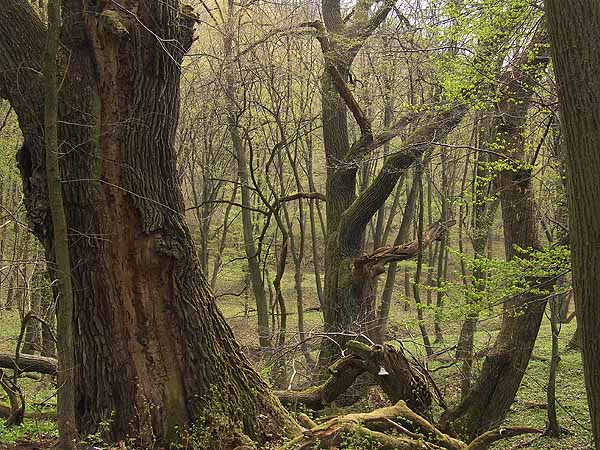
We spotted the two old trees from the car. They are really huge.
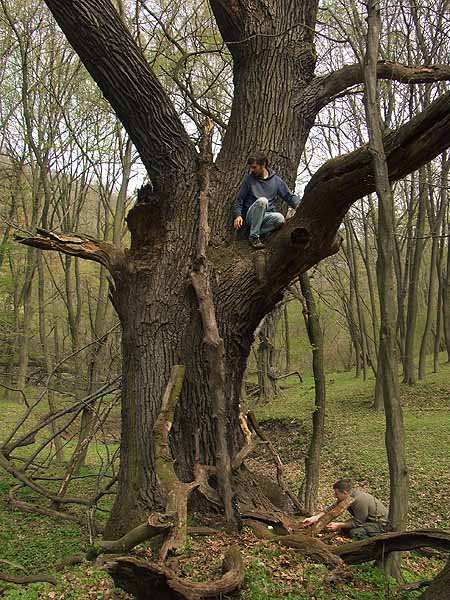
I found Ampedus cardinalis (Schiödte,
1865), Ampedus nigerrimus
(Lacordaire, 1835) and larvae of Gnorimus
variabilis in the red-rotten wood of a branch cavity of
the smaller tree. These species are new for the Gerecse Mountains, just
like most of the species we found this day, during our trip.
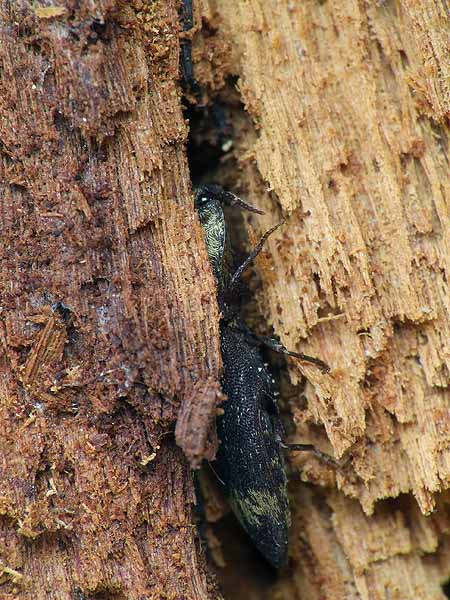
Lacon querceus (Herbst, 1784) was already active beneath bark.

Nice, warm hillside, below the valley, teeming with insect life and flowers.
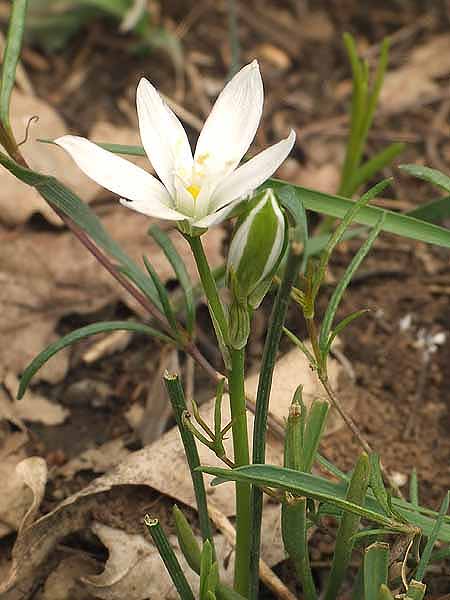
Ornithogalum sp.
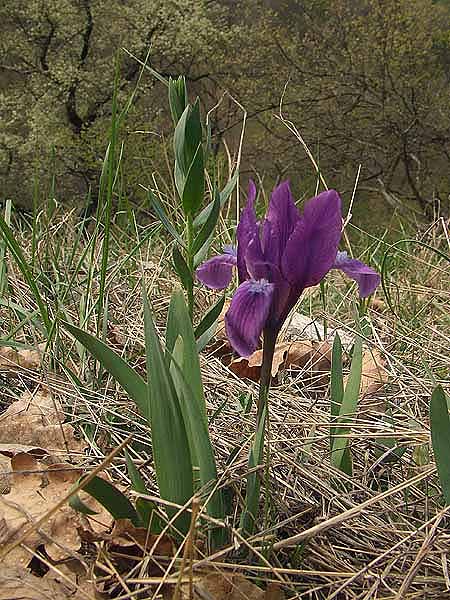
Iris pumila
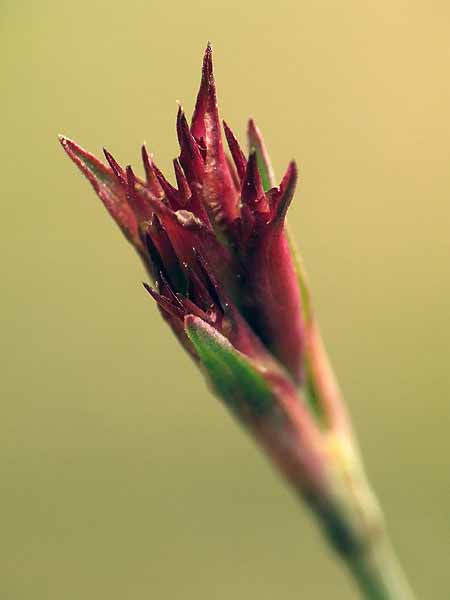
Dianthus sp.
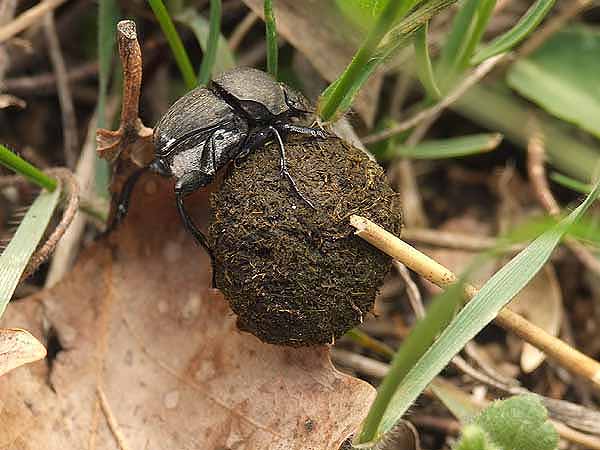
Sisyphus schaefferi (Linnaeus, 1758).
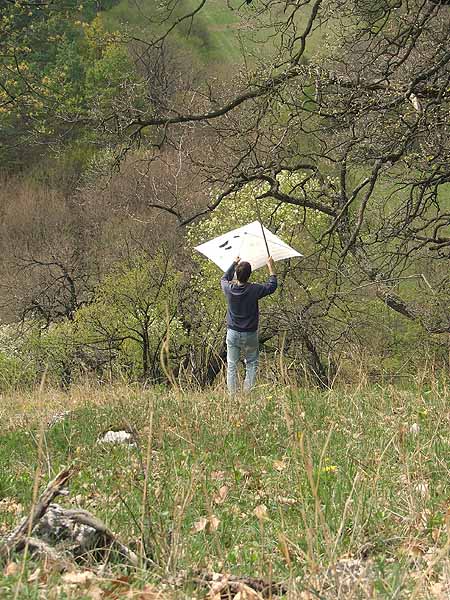
I was beating the already fresh green leaves and branches for half an hour. Weevils and other beetles swarmed.

Stenocarus cardui (Herbst, 1784).

Coeliodes transversealbofasciatus (Goeze, 1777).
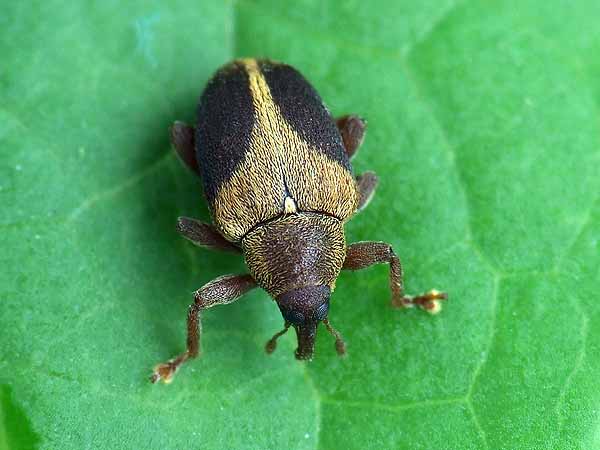
Lignyodes enucleator (Panzer, 1798).
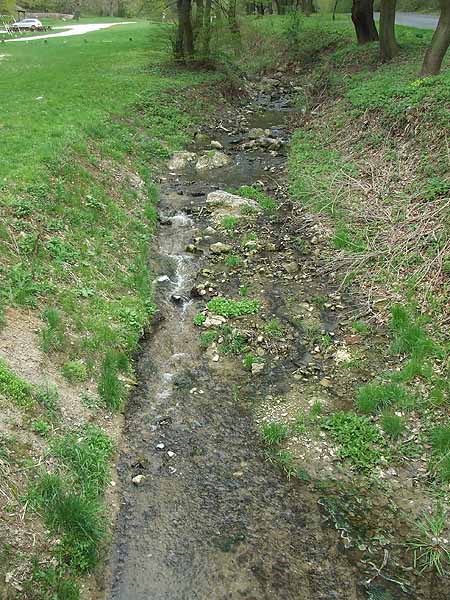
Bikol stream.

The side of the valley hides old forest, with huge beeches and hornbeams.
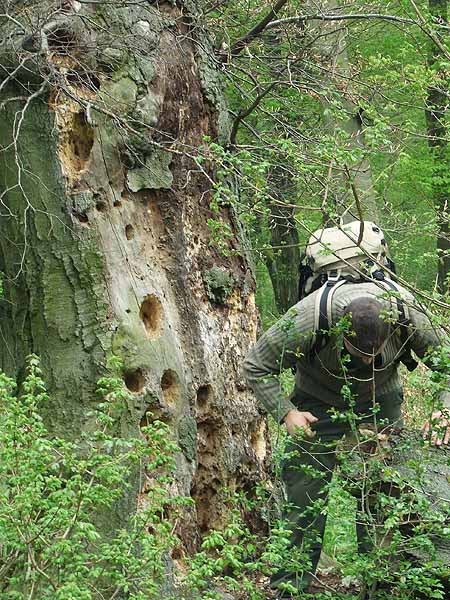

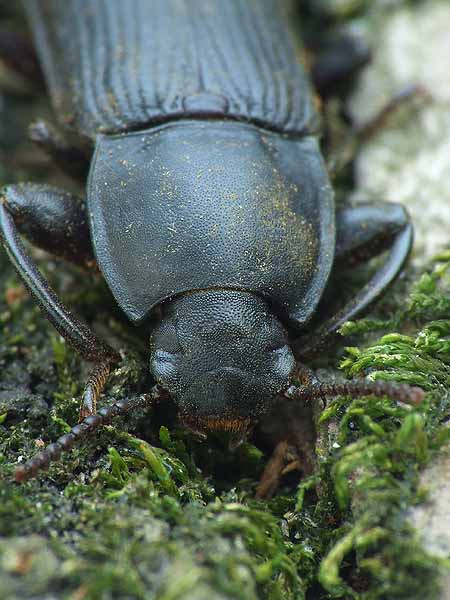
In Hungary, Tenebrio opacus Duftschmid, 1812 is be found only in mature forests.

Another darkling beetle: Neatus picipes (Herbst, 1797), common beneath bark.

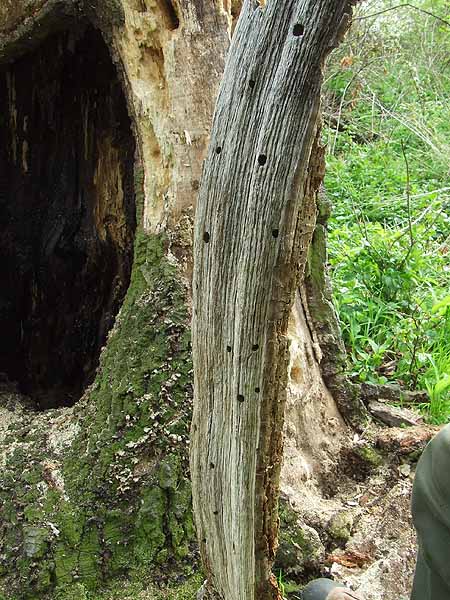
Exit holes of Necydalis ulmi Chevrolat, 1863. This old tree hosted dozens of this rare species.
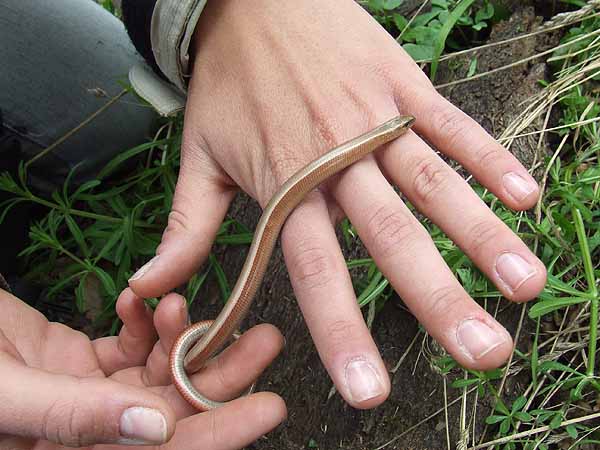
Slow worms (Anguis fragilis) were hiding on the ground, under logs.
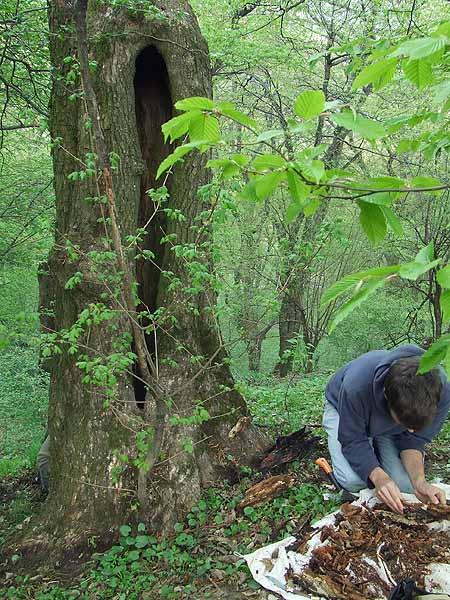
Our last stop was at this
amazing
field maple (Acer campestre).
First I spotted Procraerus tibialis
(Lacordaire, 1835), walking at the entrance of this huge cavity. Then
we gently took out the debris from the tree, and started examining it.

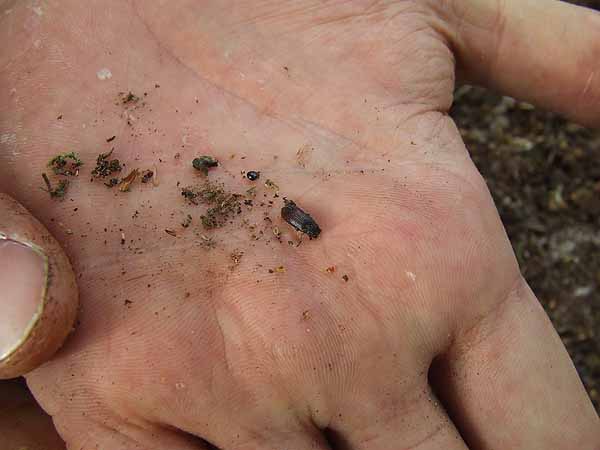

Several females of Cerophytum elateroides Latreille, 1809 walked out from the debris.

Males were crawling at the base of the tree. I never thought I would see this very interesting beetle active in such an early date.
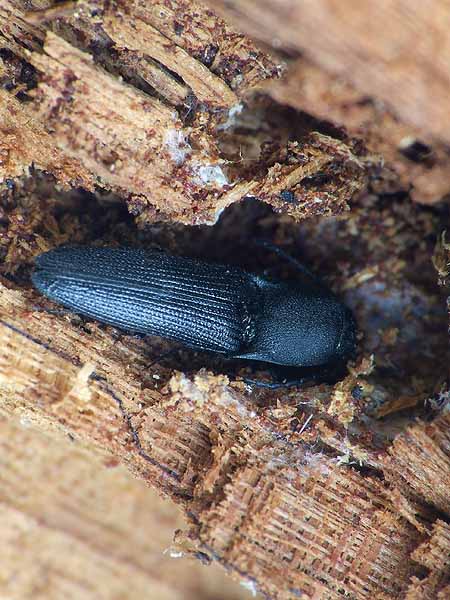
A small male of Megapenthes lugens (Redtenbacher, 1842) was also already active, despite the cold spring.
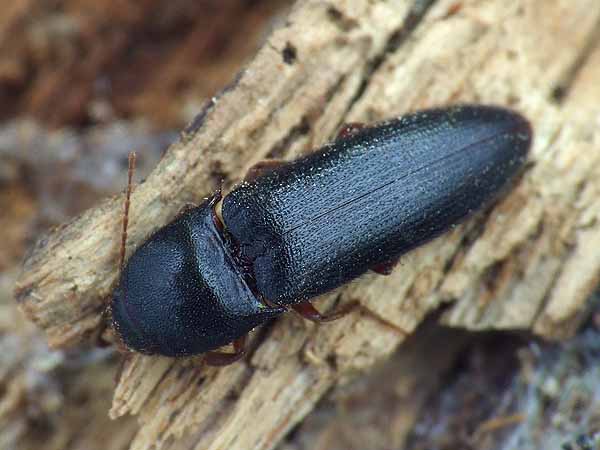
Brachygonus megerlei (Lacordaire, 1835).
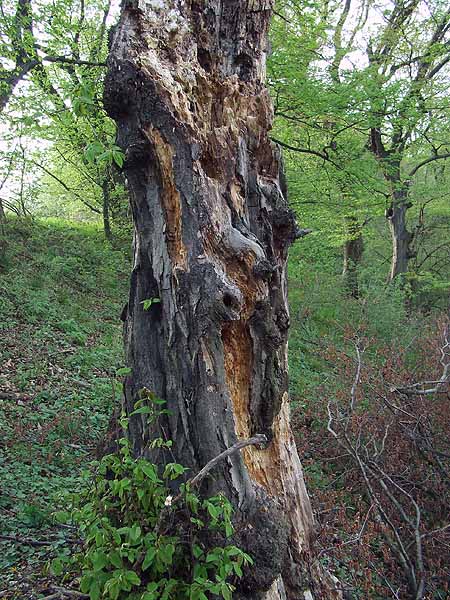

This area of the Gerecse Mountains, with dark northern and sunny southern slopes of the stream valley is a heaven for saproxylics. I hope we can visit this place again.
Copyright
©
2009. Hungarian Natural History Museum,
Department of Zoology, Coleoptera Collection